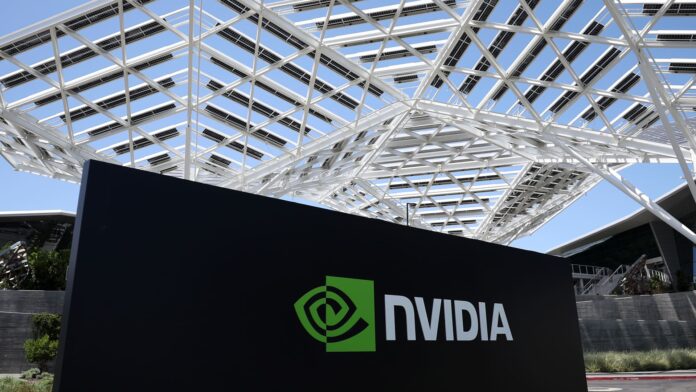Nvidia shares keep smashing records . The artificial intelligence chipmaker hit its most recent high in May, after reporting earnings that beat expectations on the back of strong AI demand. But Nvidia isn’t the only one benefitting from bullish sentiment on AI â other tech names also got a boost, leading the Nasdaq to close at a record high on May 24 despite persistent doubts over whether the U.S. Federal Reserve would cut rates this summer. Is it too late to buy into the AI boom? We asked the pros which are the best stock alternatives to Nvidia that are still cheap. Meta Meta remains a good investment at its current price, said Adam Coons, portfolio manager at Winthrop Capital Management. When he spoke to CNBC Pro , Meta was trading around $476 â and it’s currently at $466.8 per share. He noted that Meta’s revenue growth is projected to increase 17% this year, with 35% earnings per share growth. In 2025, that revenue growth is set for a 12% increase and earnings growth for 15%. That would put Meta’s multiples at 26 times 2024’s earnings and 23 times 2025’s earnings, according to Coons. “For comparison, this is substantially below other peers,” he said, adding that Amazon is trading at 44 times forward earnings, Microsoft is at 35 times, Netflix is at 32 times, and Nvidia is at 33 times. “Regardless of its runup, Meta trades cheaper than the majority of the Magnificent 7 and the index as a whole despite consistent double digit growth rates on earnings and revenue,” Coons said. According to him, there is also another metric on which Meta is trading cheaper to other AI players: the EV/EBIT ratio, which compares compares a company’s enterprise value (EV) with its earnings before interest and taxes. It’s a metric that’s used to measure a company’s earnings yield and how it translates into its value. Meta is trading at a 19 times EV/EBIT multiple, versus Microsoft’s 28 times, and Nvidia’s 25 times. “The company is adding daily active users, dominating the digital ad market in market share, bolstering their AI tools through capex, and reducing expenses while maintaining on the strongest balance sheets in Big Tech,” Coons said. Alphabet Alphabet is another alternative to Nvidia that Coons named. “Google is a great alternative to Nvidia because they have a clear path to monetize AI,” he said. “The company can improve advertiser results which increases Google’s ad revenue and it can monetize AI through subscriptions of its Gemini product,” Coons added. Alphabet’s Gemini, its AI model which it launched last December, is Google’s suite of generative AI tools, ranging from chatbots to coding assistants. “Google also holds an advantage over companies like Microsoft or Amazon because of the Android, where it can implement and introduce new features,” said Coons. According to the firm, Gemini will eventually replace Google Assistant on its Android phones. Alphabet’s shares are still trading at 22 times forward earnings after double-digit sales growth, a “revival” of its marketing business, “substantial” operating income growth and margin expansion, as well as the introduction of a dividend, Coons said. He added that the company remains “a lot more diversified” with businesses unrelated to its marketing unit, and its Google Cloud unit that’s nearing $1 billion in operating profit. Qualcomm Angelo Zino, vice president and senior equity analyst at CFRA Research, named two of what he says are among the cheapest alternatives to Nvidia. One is Qualcomm , a stock whose rating Zino said he recently upgraded from hold to buy. He said the upgrade reflects the company’s growing total market opportunity for AI PCs, smartphone content, autonomous cars and other Internet of Things products. “We view it as an on-device AI winner for the long haul,” said Zino. “We do think QCOM is benefiting from improving China demand, with premium Android devices selling well, while the ramp of Windows AI PCs represents a new growth opportunity,” he added. Micron Micron is the other cheap alternative to Nvidia that Zino likes. He believes that the memory chip industry is “poised to recover.” In particular, Zino noted that Micron is “tethered” to Nvidia’s H200, a graphics processing unit that “supercharges” AI workloads, according to the company. He also likes that Micron puts greater emphasis on pricier DRAM servers with higher margins, and its focus on high-bandwidth memory, which will bring upside to the company. “Given content gain potential and increasing shift towards higher value AI servers, we think MU’s multiple could expand versus historical levels ⦠which could offer upside ahead,” said Zino.


